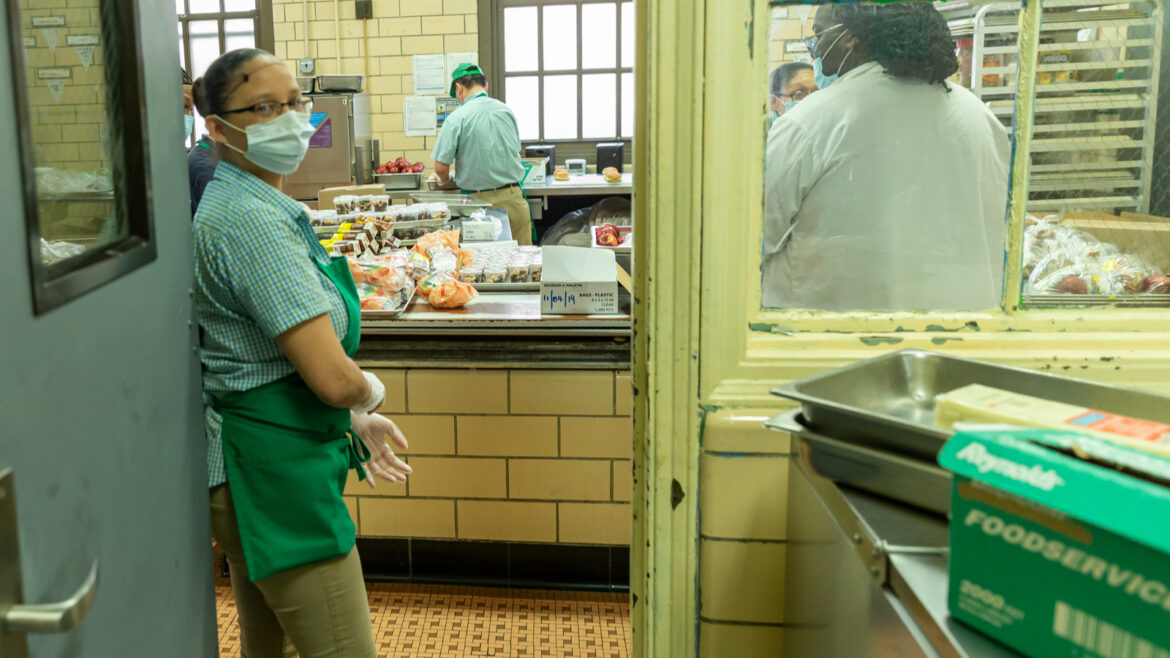Part of the Food Policy Snapshot Series
Policy name: School Lunch Repack Pilot Program
Overview: Three school districts are piloting a one-month program to distribute leftover school lunches to families in need through the schools’ food pantries.
Location: Fargo and West Fargo, North Dakota and Moorhead, Minnesota
Population:
Fargo, North Dakota: 125,804
West Fargo, North Dakota: 38,654
Moorhead, Minnesota: 44,198
Total: 0.2 million
Food policy category: Food waste, food insecurity
Program goals: To feed those who are hungry and reduce food waste.
How it works: At the end of lunch service at the schools in the Fargo, West Fargo, and Moorhead school districts, leftover meals are being repackaged in microwave-safe containers, then frozen, labeled with allergen warnings and instructions for reheating, and donated to an existing school food pantry. Each school district has designated one school food pantry as a host site for the pilot program.
While schools will stop collecting leftover meals at the beginning of April, any remaining frozen meals will continue to be distributed through the food pantries until the end of the school year or until all meals have been claimed.
Microwave-safe containers were donated by Power Plate Meals. Additional support has been provided by United Way of Cass-Clay, Great Plains Food Bank, Fargo Cass Public Health, Clay County Public Health Center, and the Cass-Clay Hunger Coalition.
Progress to date: The program has been running since March 8 and will end in the first week of April.
Why it is important: In Clay County, Minnesota, where Moorhead is located, ten percent of the population are food insecure, and in Cass County, North Dakota, where Fargo and West Fargo are located, nine percent are food insecure. Feeding America predicts that, in 2021, one out of every six children (13 million) will experience food insecurity. It is important that the appropriate resources are available for these children and their families to get the food they need.
In addition, a study done by the World Wildlife Fund has determined that schools waste an average of 39.2 pounds of food per student per year, which amounts to approximately 530,000 tons of school food waste nationally per year. Schools can help reduce both food waste and food insecurity by donating leftover meals to feed the hungry.
Program/Policy initiated: The pilot began on March 8.
Point of contact:
Stephanie Hansen, Public Relations Specialist
West Fargo Public Schools
Email: SHANSEN@west-fargo.k12.nd.us
Phone: (701) 356-2000
Similar practices: In 2017, Texas schools began using leftover school food to create school food pantries.
Evaluation: The Great Plains Food Bank and United Way of Cass-Clay are collecting data throughout the four-week pilot. In the first week of the program, West Fargo reported that 49 meals were repacked and 44 of those (90 percent) were claimed from the Liberty Middle School student food pantry.
Full data will be evaluated at the end of the program to determine the program’s reach and impact.
Learn more:
- Key Factors for School-Based Food Pantries: Perspectives From Food Bank and School Pantry Personnel (Journal of Hunger and Environmental Nutrition)
- Reducing Food Waste at K-12 Schools (United States Department of Agriculture)
- School Pantry Program (Feeding America)
- Why Billions In Food Aid Hasn’t Gotten To Needy Families (National Public Radio)
References:
- Area Schools Taking Part in School Lunch Repack Pilot Program (Valley News Live)
- Cass County, North Dakota (County Health Rankings)
- Clay County, Minnesota (County Health Rankings)
- Food Waste Warriors (World Wildlife Fund)
- The Impact of the Coronavirus on Child Food Insecurity (Feeding America)
- Metro Area School Districts Launch Pilot Program to Target Food Insecurity, Waste (KVRR Local News)
- Texas Public School Districts May Now Store, Not Trash, Leftover Food (The Texas Tribune)
- West Fargo Public Schools Partnering with Community Agencies on School Lunch Repack Pilot Program (West Fargo Public Schools)


